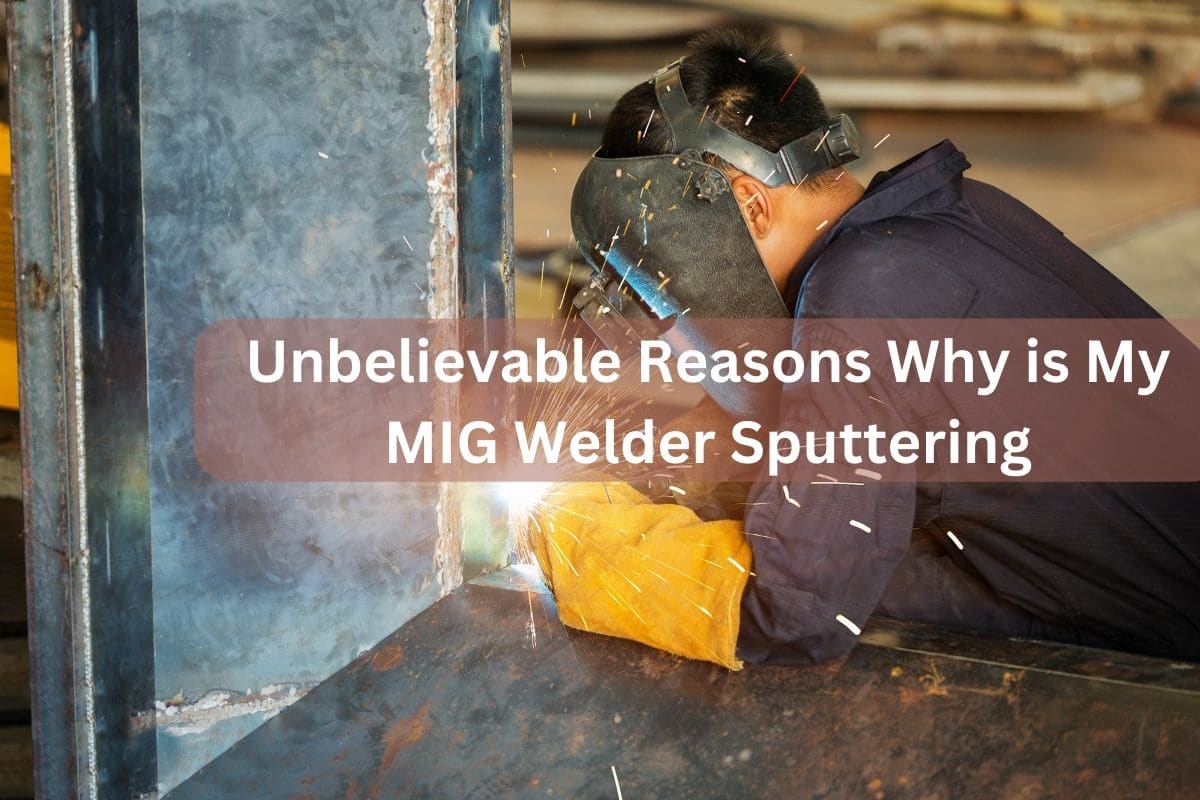If you’ve ever asked yourself, “Why is My MIG Welder Sputtering?” you’re not alone. Sputtering in MIG welding is a common but troublesome issue that many welders face.
From irregular current flow to shielding gas selection, various factors can lead to this problem.
This article dives into the top seven reasons that might make you question, “Why is My MIG Welder Sputtering?” and provides insights to address them.
Current Inconsistencies: A Significant Contributor to Sputtering
In the MIG welding process, an essential factor that directly impacts the quality of your welding is the consistency of the current flow. Optimal current flow is critical for a smooth and precise arc formation.
But what happens when there’s an imbalance in the current flow, when it’s either too low or too high?
Well, one of the primary outcomes is sputtering – a rather annoying and, more importantly, harmful occurrence that compromises the quality of your weld.
Understanding and maintaining the correct current flow is an effective way to tackle this issue.
Read Also : Welding Slang: Discover the Useful Professional Terms
Feed Rate Issues: Its Role in Spattering
Let’s delve into another aspect that influences the sputtering in MIG welding – the feed rate.
The term ‘feed rate’ refers to the speed at which we introduce the filler metal into the weld pool. It’s a balancing act. Too slow or too fast, both can tip the balance, leading to spattering.
So, have you ever wondered how the feed rate can control spattering?
The answer lies in the weld pool’s stability. An inappropriate feed rate can destabilize the weld pool, causing a high level of spattering.
Being aware of this and learning to adjust the feed rate accordingly can significantly reduce spattering and enhance the quality of your welding work.
Surface Contaminants: An Invisible Foe of Smooth Welding
When it comes to welding, cleanliness is more than just aesthetics; it’s about ensuring optimal performance.
Unwanted materials or contaminants on the surface of the metals we’re welding can pose a significant challenge – and yes, you guessed it right, they’re one of the primary causes of sputtering.
But why do these tiny particles cause so much trouble?
Simply put, these foreign materials disrupt the smooth flow of the arc, leading to sputtering.
Thus, the seemingly tedious task of cleaning the metals before welding plays a pivotal role in achieving a spatter-free and efficient welding experience.
Welding Gun Angle: Small Changes, Big Impact
Moving on, the angle at which we hold the MIG welding gun is more important than we might initially think.
It’s one of those seemingly minor aspects that can have a significant impact on the welding process.
Especially, it can trigger that unwanted sputtering we are trying to avoid.
But, what’s the safe limit for this angle?
Typically, moving the welding gun beyond a 15-degree angle increases the likelihood of spattering.
Keeping the gun within this angle range can be a small but effective step towards reducing sputtering and improving the quality of your weld.
Machine Problems: How They Play a Role in Spattering
The condition and setup of your welding machine significantly impact the quality of your weld. Mechanical issues or an unstable setup can indeed be the secret culprits causing spattering.
How so, you might ask?
Well, think of your welding machine as a finely-tuned orchestra. If even one instrument (or part) is off-key or out of place, it disrupts the harmony of the entire performance.
Similarly, when your machine isn’t working correctly or the setup isn’t solid, the welding process gets disrupted, leading to spattering.
Therefore, ensuring that the machine is functioning well and the setup is solid is an effective strategy to reduce sputtering.
Subpar Metals: Quality Matters in Reducing Spattering
The quality of the metals we choose for welding is another significant factor influencing spattering. Using low-quality metals can result in higher spatter levels compared to high-quality metals.
But why does the metal quality matter so much?
The reason lies in the composition and structure of the metals. Low-quality metals may have impurities or an inconsistent structure that disrupts the welding process, leading to increased spattering.
Therefore, choosing good quality metals for welding is not just about the end product’s durability but also about a smoother and spatter-free welding experience.
Read Also : Why is My MIG Welder Popping? Discover Useful Solutions
Shielding Gas Selection: The Right Choice for Less Spattering
Last but not least, the type of shielding gas we use in MIG welding plays a crucial role in controlling spattering.
Incorrect selection of shielding gas for the metal type or the kind of welding being done can escalate spattering issues.
But how does the shielding gas influence spattering?
Different types of shielding gases interact differently with various metals and welding conditions. The wrong gas can destabilize the welding arc or interfere with the weld pool, leading to excessive spattering.
Thus, the correct selection of shielding gas, keeping in mind the specific metal and type of welding, is key to reducing spattering.
Conclusion Why is My MIG Welder Sputtering
Welding is an intricate process, and understanding the reasons behind the question, “Why is My MIG Welder Sputtering?” can significantly improve the efficiency and quality of your work.
By taking into consideration factors like current flow, feed rate, metal quality, and shielding gas selection, you can find answers to this vexing question.
With a proper understanding and application of these principles, you might never have to ask, “Why is My MIG Welder Sputtering?” again.
Instead, you’ll enjoy a smoother, more effective welding experience that will save both time and resources.


